Perugia is a charming city, tucked away on the slopes of gentle Umbrian hills. It has a nice, large historic center ringed by more modern development. But in the city center you will find more than 2500 years of history, beautiful architecture, and an exuberant zest for life. It is much admired by artists, architects, and historians. Music lovers also appreciate Perugia for its Umbria Jazz festival held each summer. This post will describe 12 great things to do in Perugia, Italy. Granted there are many more things to do, but these 12 are the ones I enjoyed the most.
But I would be severely remiss if I don’t mention Perugia’s cuisine, wines, olive oil, and especially chocolates. Perugina chocolates were invented here and have been recognized world wide for their high quality. As for wineries and wine-tasting, Perugia is the right place to visit. If you are driving, there are at least 20 wineries within an hour of Perugia. Oh, yes, I can’t forget olive oil. There are at least 10 olive oil manufacturers also within a hour’s drive of Perugia. Last but not least, there is the fantastic Umbrian cuisine. Much of it is derived from Etruscan roots which focuses on simplicity but with flavors so refreshingly savory. It’s ingredients are seasonal which results in such a wide variety of dishes. Local products are used such as grains, vegetables, fresh herbs, and olive oil. Also popular are black or white truffles cooked with pasta or risotto.
Perugia is located approximately halfway between Rome and Florence. It is easily reached by train or bus from Florence, Rome, and Bologna. It also has the San Francesco d’Assisi airport which is 15 miles east of Perugia’s historic center. It connects Perugia to many European locations. A sampling of these are: Amsterdam, Netherlands; Vienna, Austria; London, England; Barcellona, Spain. (There are buses that connect the airport to Perugia center. You could also take a taxi.)
A Little History:
The earliest known settlers of Perugia were the Etruscans. They must have found the location overlooking beautiful verdant hills suitable and the land fertile. Perugia became one of their twelve city-states in the Etruscan federation of Etruria. Today one can find some Etruscan defensive walls, arches, and a deep well (the Pozzo Etrusco).
After the Romans defeated the Etruscans in 310 or 309 BC a truce followed. However it was short-lived and the Romans finally conquered the Etruscans in 294 BC. Many artifacts from the Etruscan and Roman period are on display in the Museo Archeologico Nationale Umbria.
After the fall of the Roman Empire in 476 AD, Perugia was controlled by the Ostrogoths. But a few years later it was conquered by the Byzantines. This was followed several years later by violent attacks from the Lombards, another Germanic tribe, which the Byzantines managed to keep at bay. Meanwhile Perugia strove to become increasingly autonomous, with limited success. In the later part of the 6th century it became a duchy within the Byzantine Empire.
In the mid-to-late 8th century political skirmishes between the Byzantine Empire and the popes arose. Then in 754 AD, Pope Sylvester invited Pepin, the king of the Franks, to defeat the Lombards to the north and take over a strip of Byzantine territory which included Perugia. Once accomplished, Pepin turned over the land to Pope Sylvester.
In time Perugia became dissatisfied with its subservient situation. During the following decades it sought and gained increasing autonomy. Eventually it was granted independence in the 12th century. Over the next few centuries Perugia’s importance grew as it became increasingly prosperous. This is the period when many of the fine architecture we see today in Perugia’s historic center were built.
What to see during your stay in Perugia:
- Wander through the main piazzas – Piazza Dante, Piazza IV Novembre, Piazza Italia
Perugia is blessed with wonderful piazzas lined with historic buildings and enticing restaurants, cafes, and small shops. There is such a variety of interesting shops to attract even the most incurious stroller – shops selling chocolates, pastries, jewelry, flowers, cosmetics, breads, wines, nick-knacks, fine clothing, footwear, housewares, and much, much more. Interspersed are restaurants, cafes, and ice cream shops.
I recommend a walking tour starting from Piazza Dante. Walk south across the piazza and past the church of San Lorenzo to enter Piazza IV Novembre. This is a huge piazza containing the Fontana Maggiore. This fountain was created between 1278 and 1280 by Nicola and Giovanni Pisano. It consists of two concentric basins decorated with 50 bas-reliefs and 24 statues. Water spouts out from a large bronze cup that sits on top and flows into the upper basin.
Continue walking south past the 13th century Palazzo dei Priori (the Town Hall of Perugia) on your right and along Corso Vanucci. This is a wide, vehicle-free street that passes by Piazza Italia. It is bustling with cafes, street musicians, bars and some of the more expensive hotels.
Piazza Italia is a small pleasant piazza with large mature trees and several well placed benches. It offers a comfortable place to sit and enjoy the comings and goings of the tourists and the city residents and to enjoy a gelato from one of the nearby vendors.
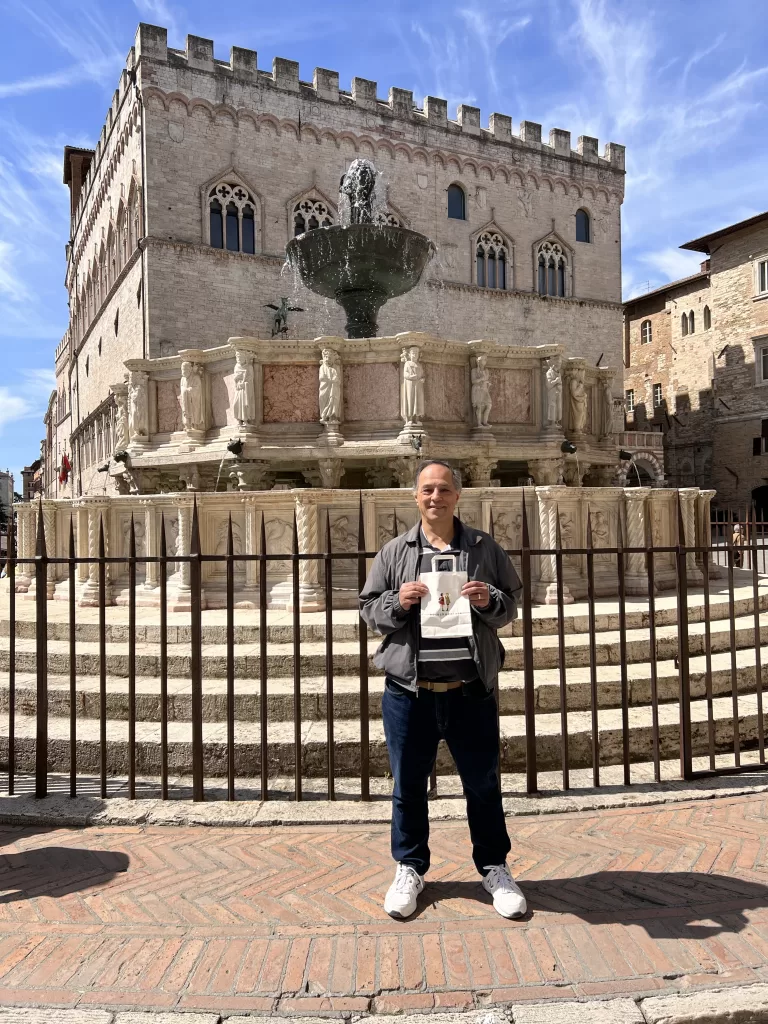
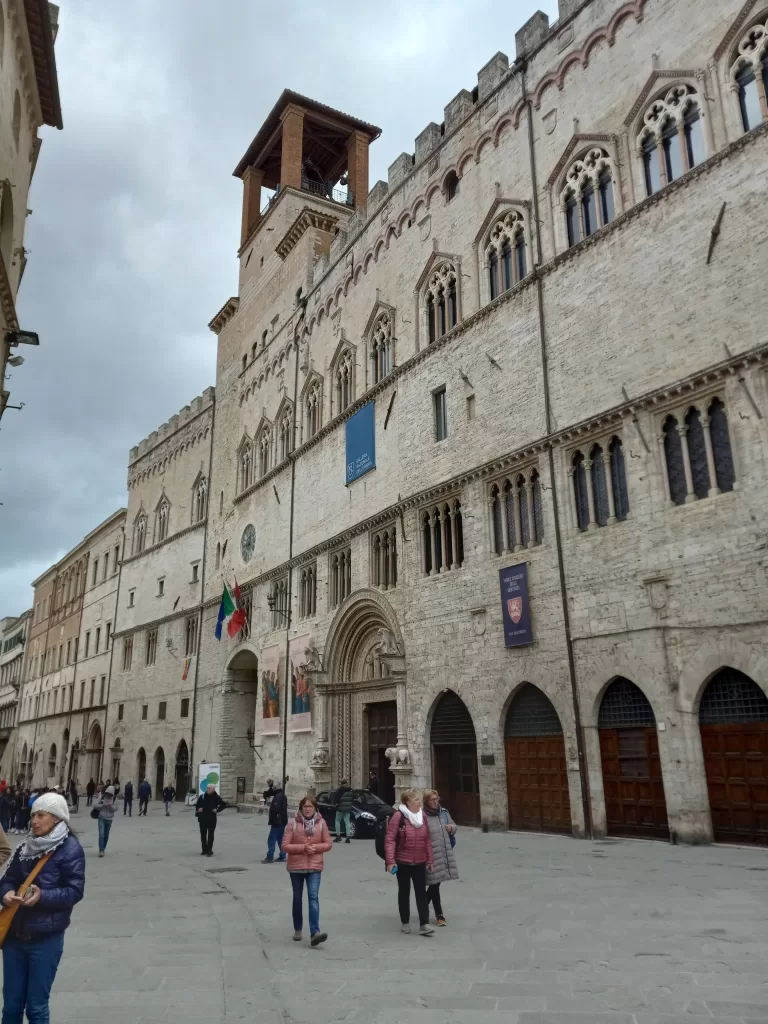
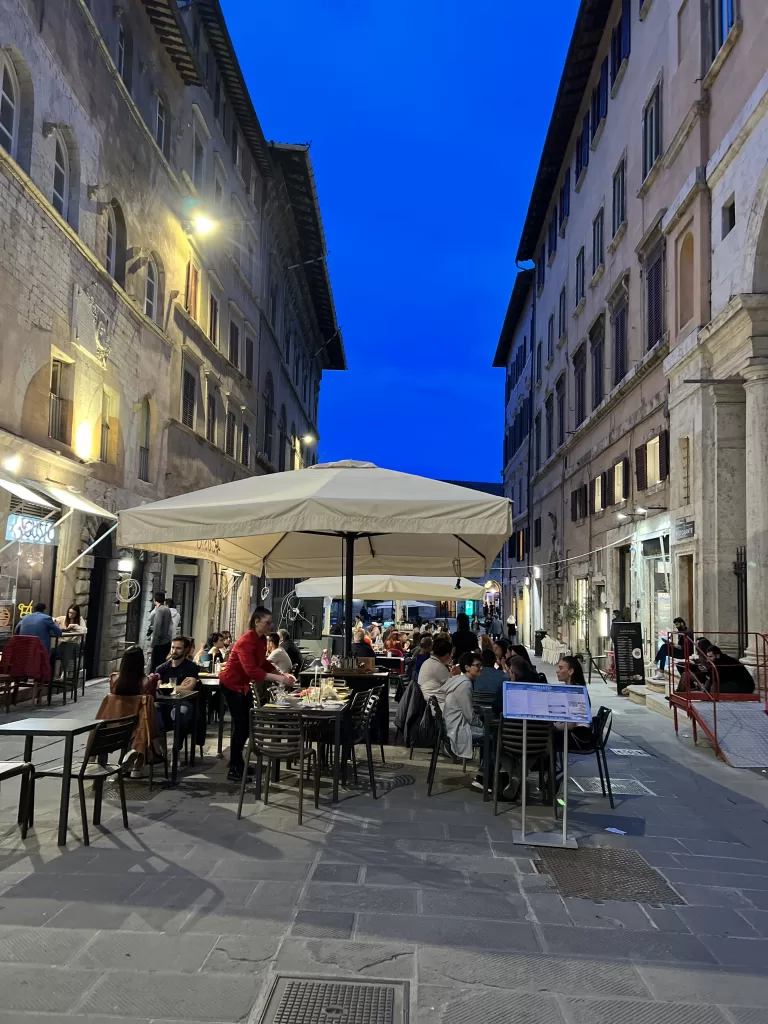
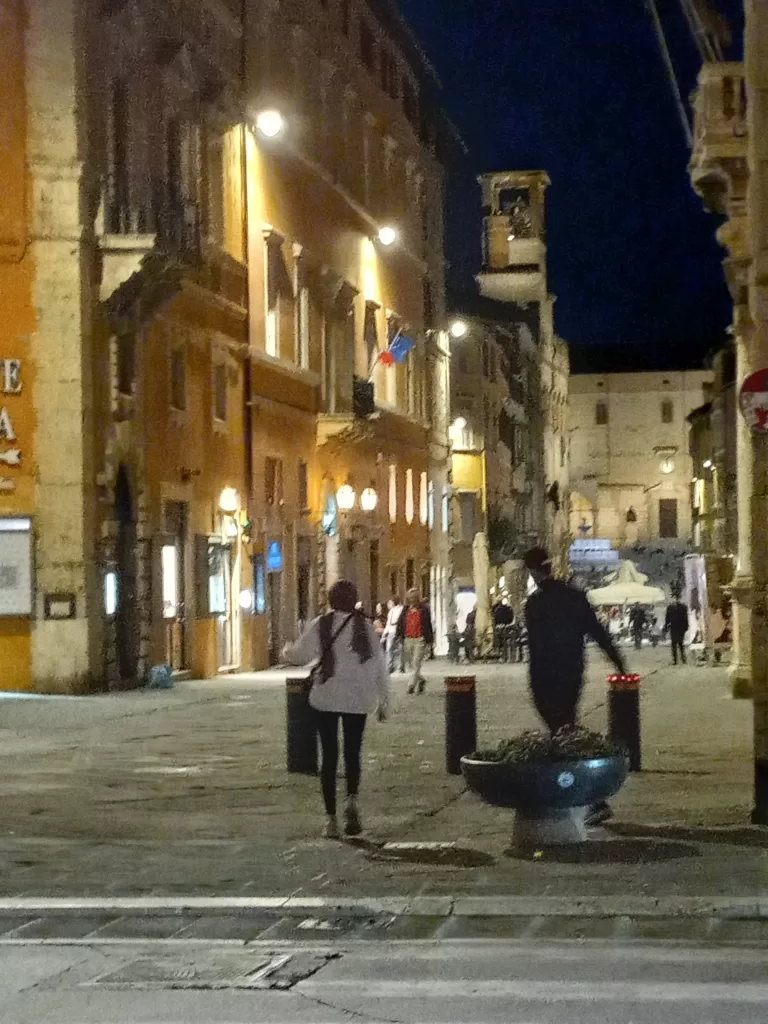
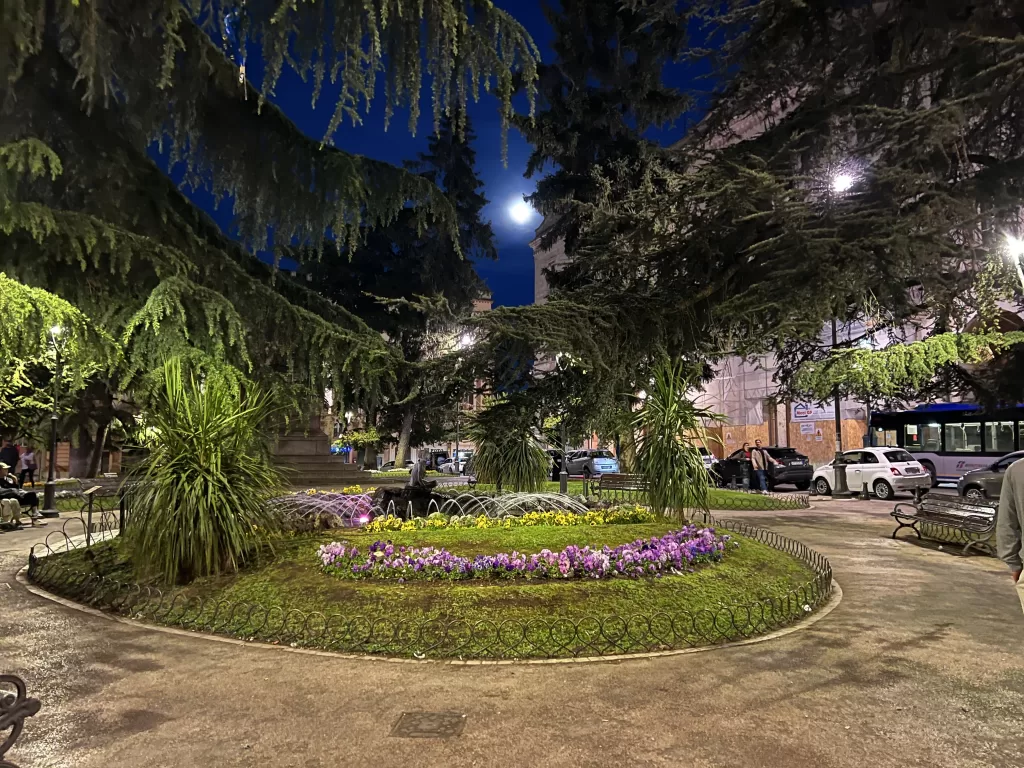
2. National Museum of Umbria
Located in the top floors of the Palazzo dei Priori (off of Piazza IV Novembre), this small museum displays Umbrian art from the 13th to the late 18th centuries. Many of the paintings are by Pietro Vannucci (known as Pietro Perugino) who was born in Perugia in 1446 (29 years before the birth of Michelangelo).
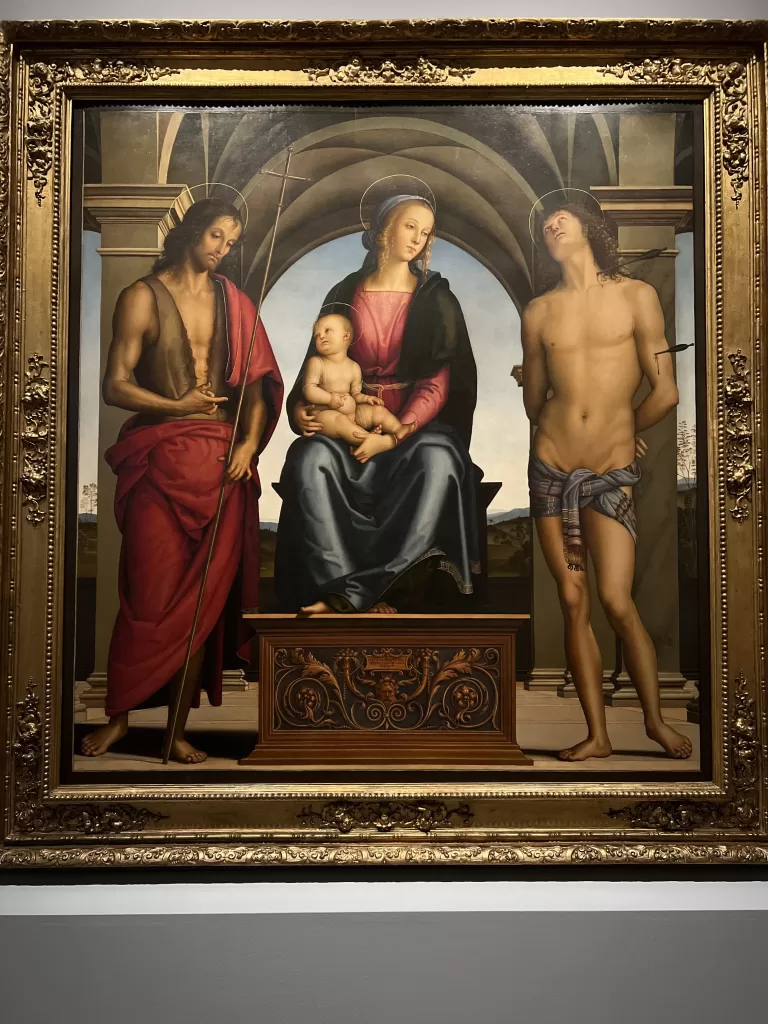
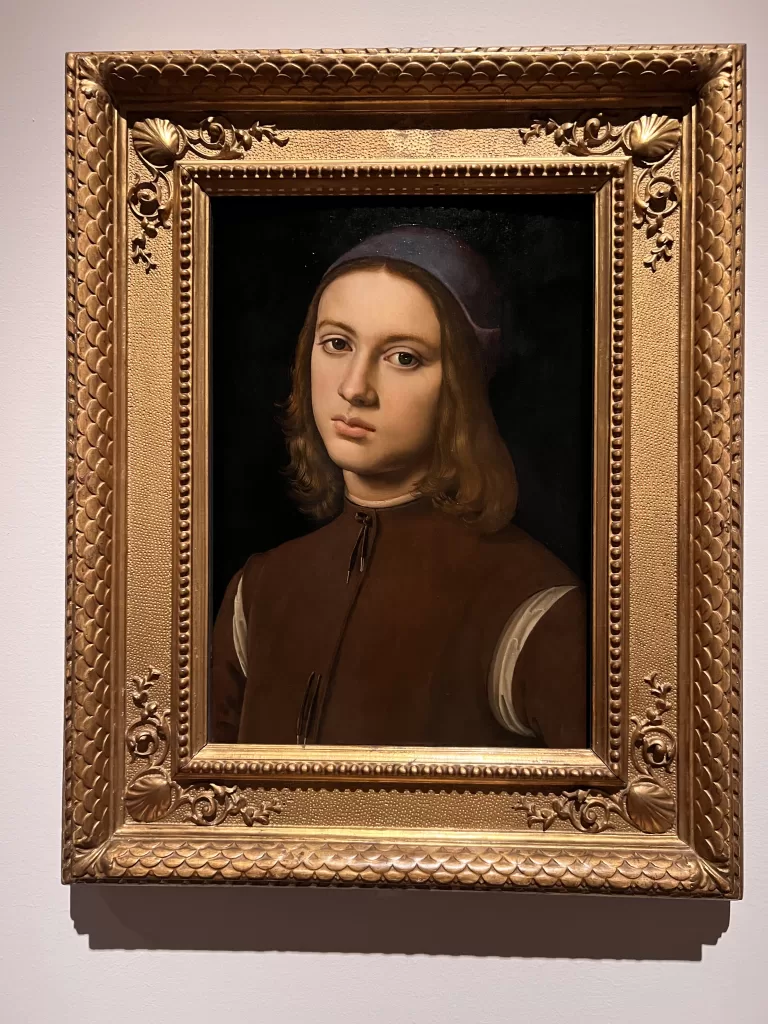
3. Pozzo Etrusco
The Pozzo Etrusco is a deep well built more than 2200 years ago by the Etruscans. It is fed by 3 veins and is still an important source of water for the town. The top of the well protrudes into Piazza Piccinino. The heart of the well lies 121 feet below and can be viewed after entering the Pozzo Etrusco museum from the entrance on Piazza Ignazio Danti. It is well worth a visit. It allows you to marvel at the Etruscan’s exceptional hydraulic engineering skills.
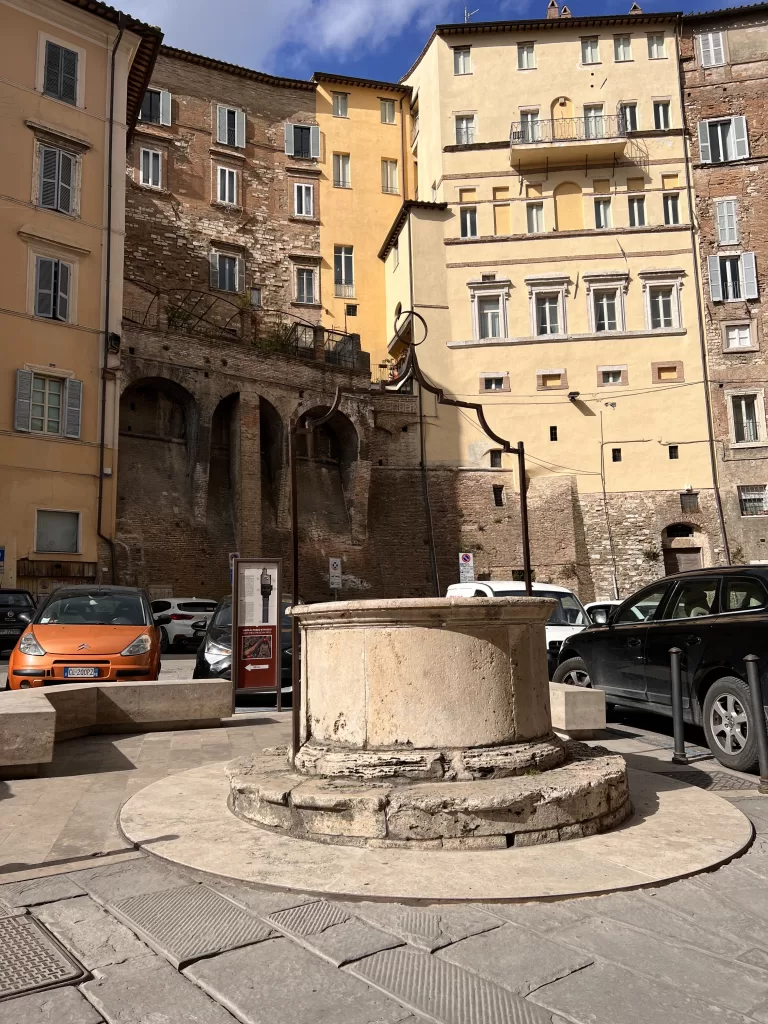
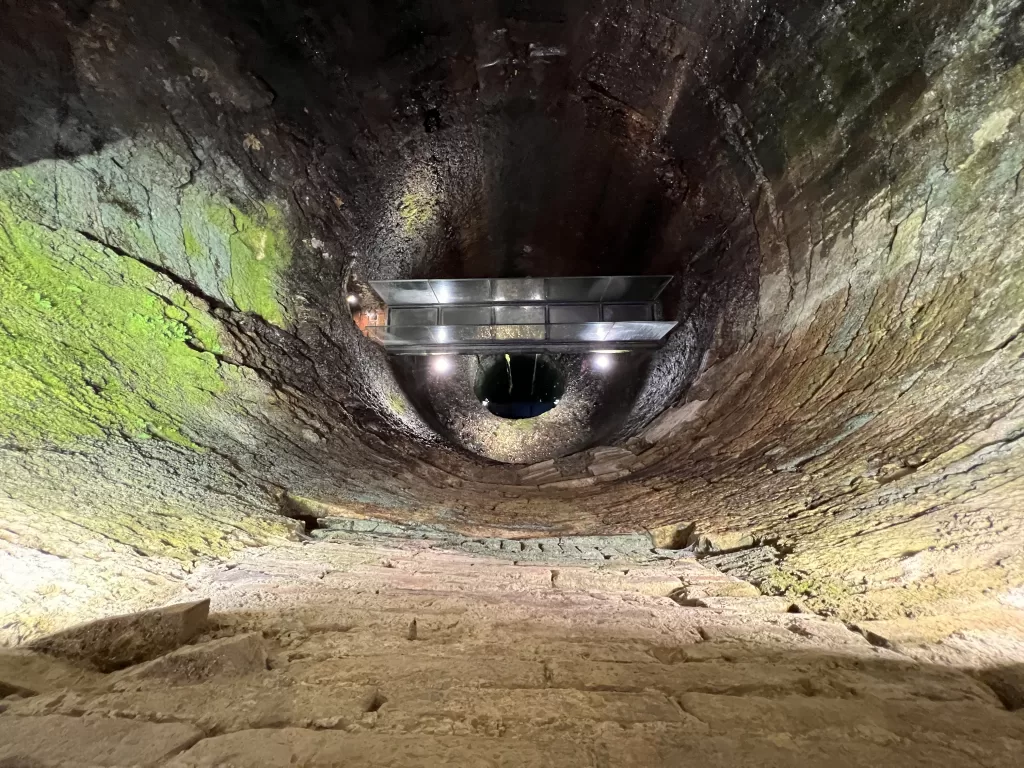
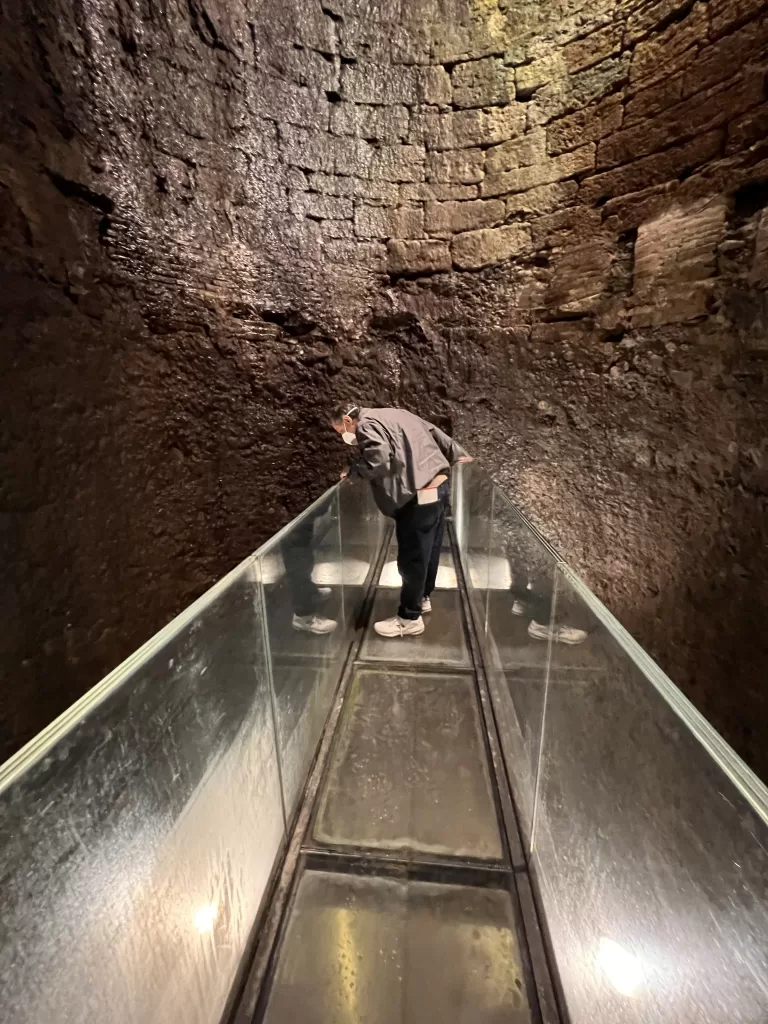
4. Museo Archeologico Nationale Umbria
The National Archaeological Museum of Umbria is located in the former Dominican monastery that next to the Basilica di San Domenico. It contains Roman and Etruscan antiquities from the Bronze and Iron Ages. Also on display are funerary urns, Etruscan and Roman bronzes, jewelry, and gold work. One of the museum’s most important artifacts is the Cippus Peruvianus, which is a stone tablet containing the longest known Etruscan inscription. Even the building itself is a fascinating example of 13th-century architecture.
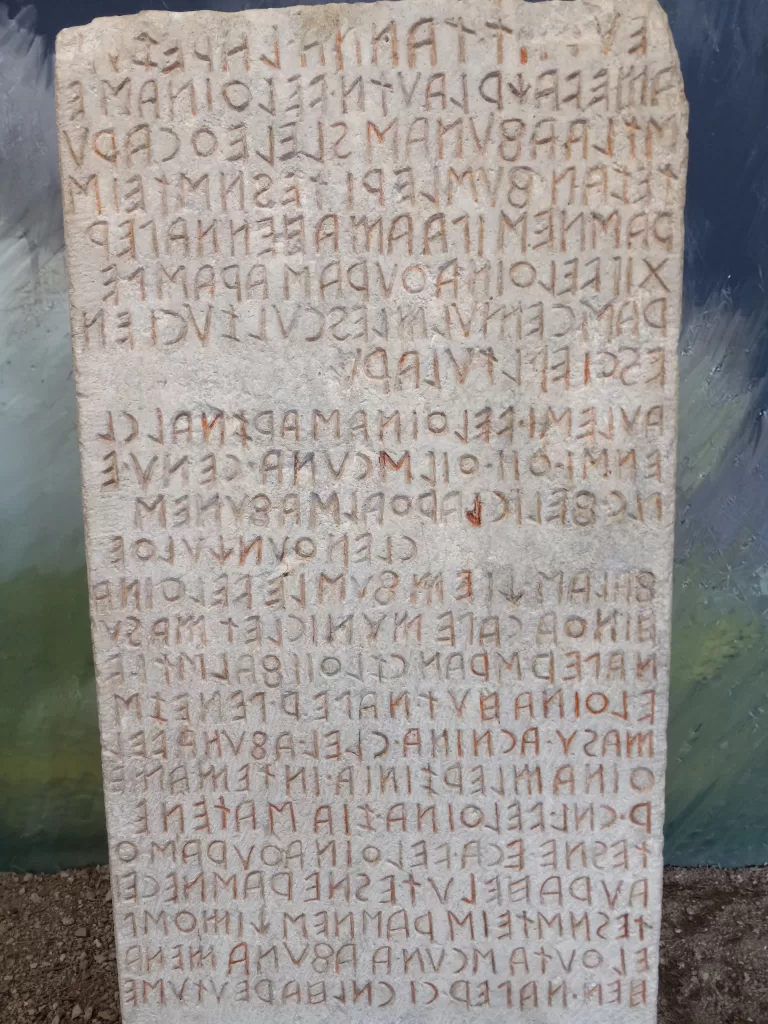
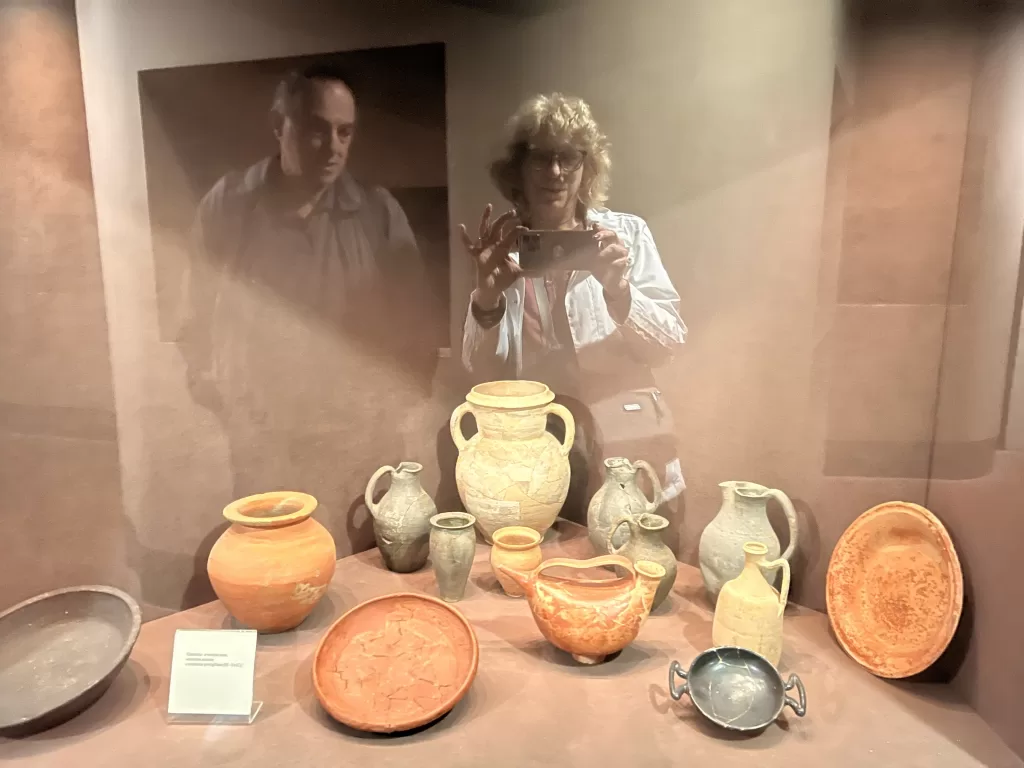
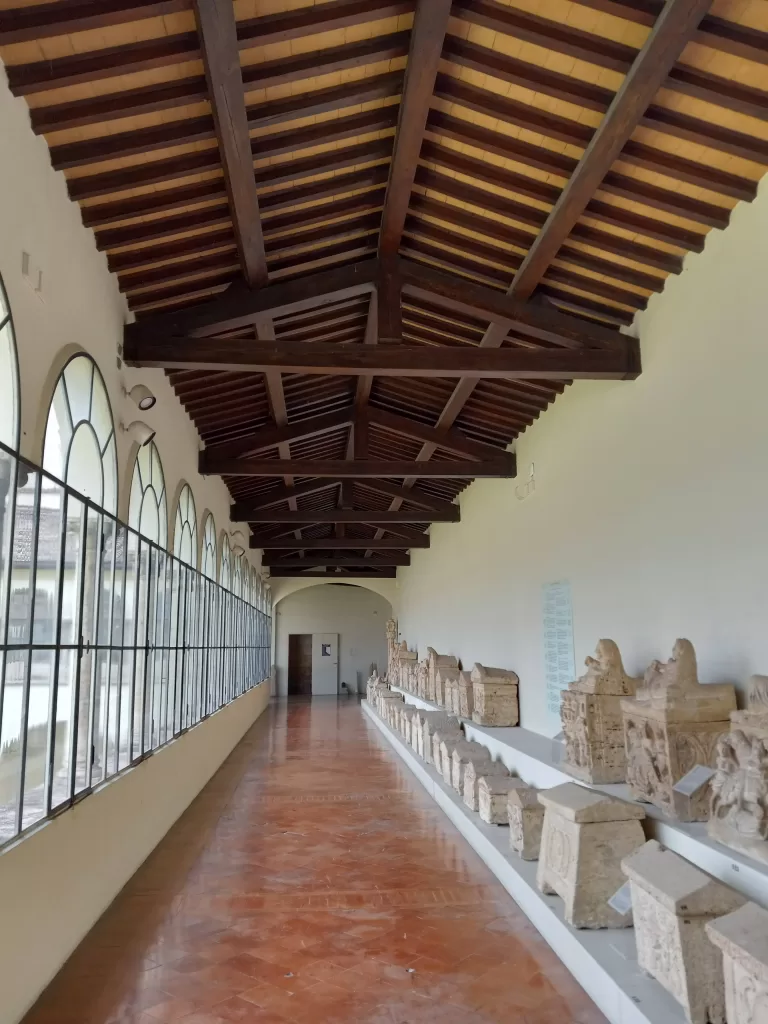
5. Walking tours of Etruscan walls and arches and medieval portas
If you enjoy history and marveling at the engineering accomplishments of early civilizations, then you ought to view Perugia’s Etruscan walls, Etruscan arches, and medieval portas. Five of these portas had been the medieval city gates leading to what was then Perugia’s five districts. The Tourist Information Office provides an excellent booklet (free) that provides five self-guided walking tours.
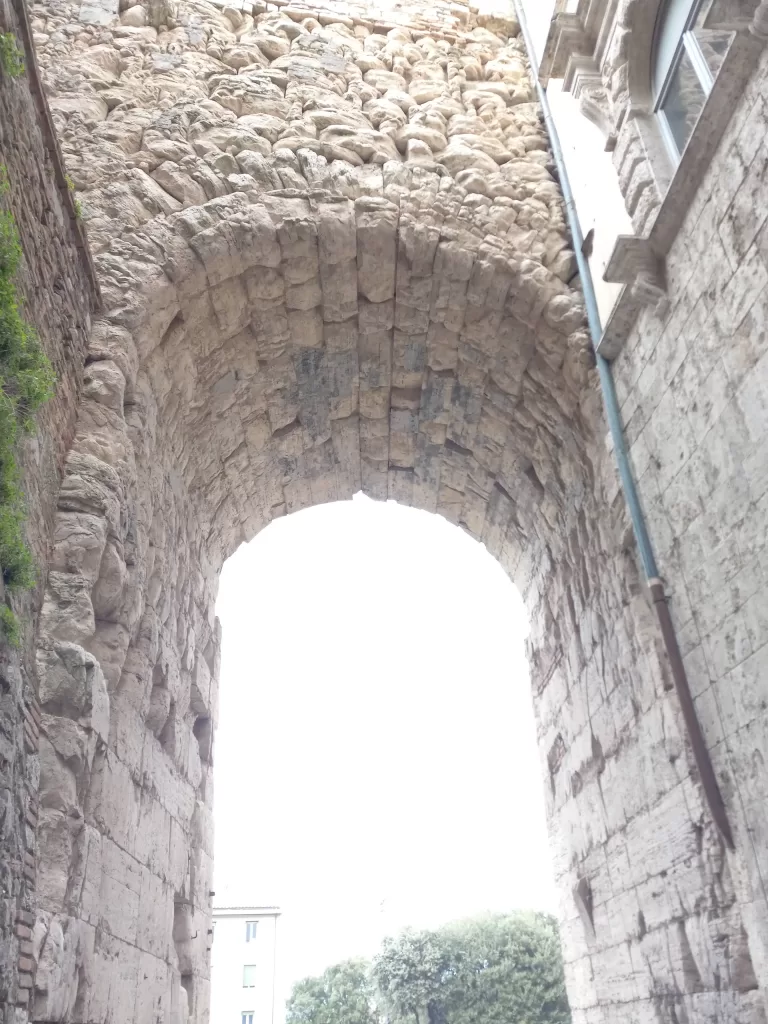
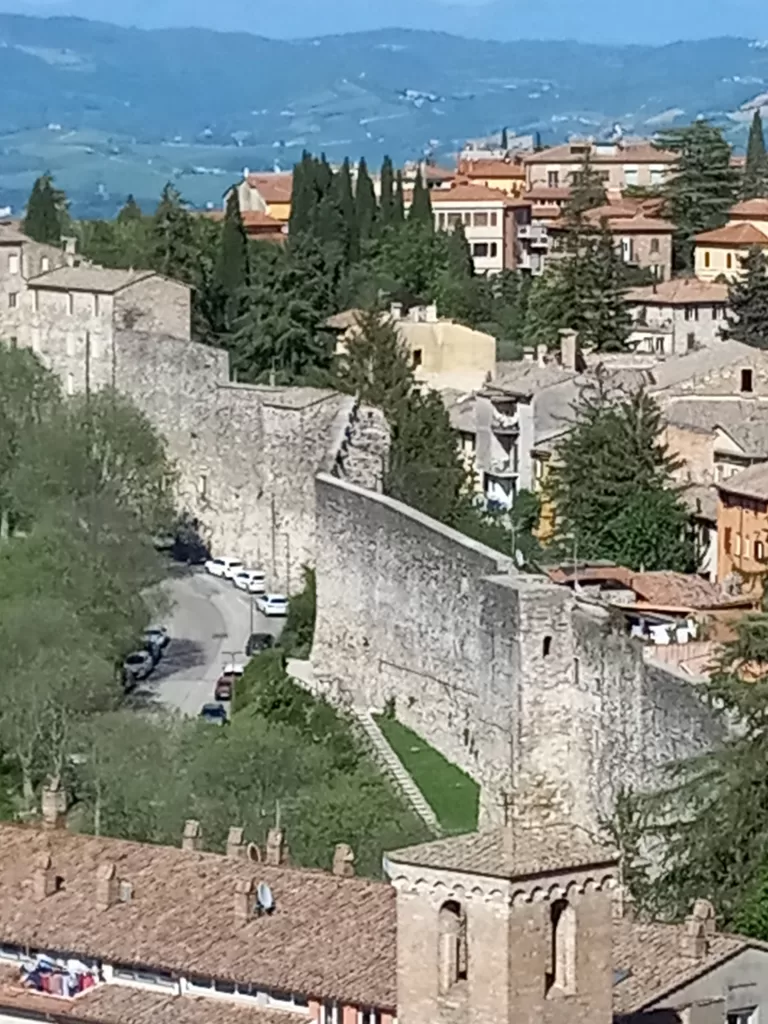
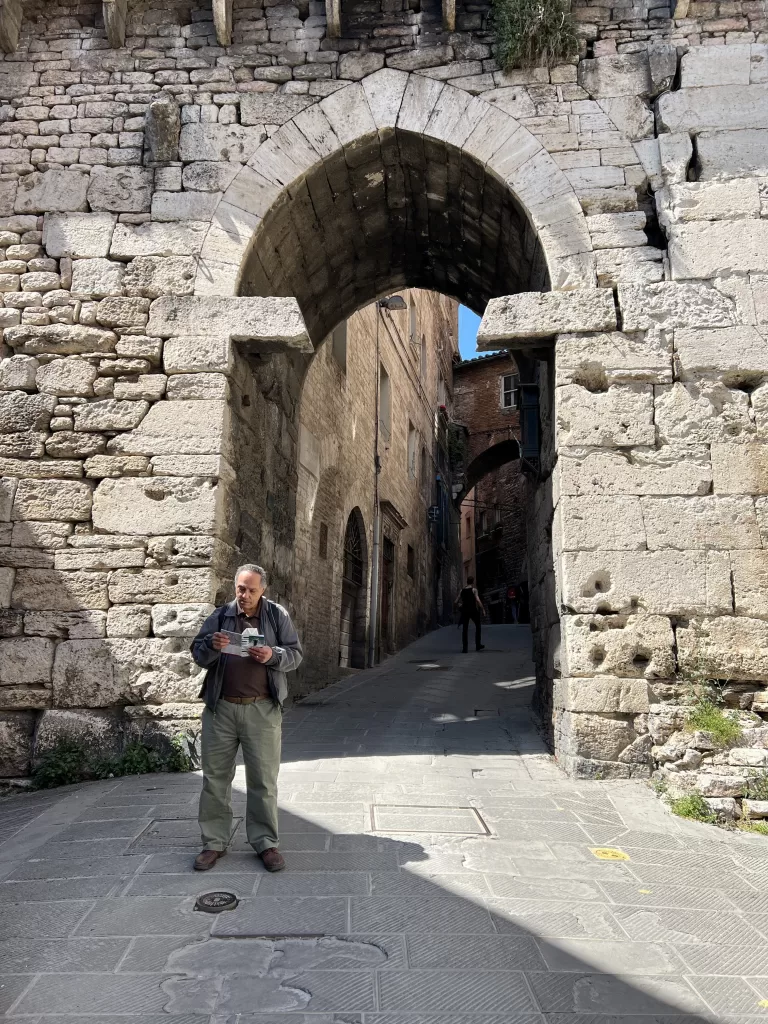
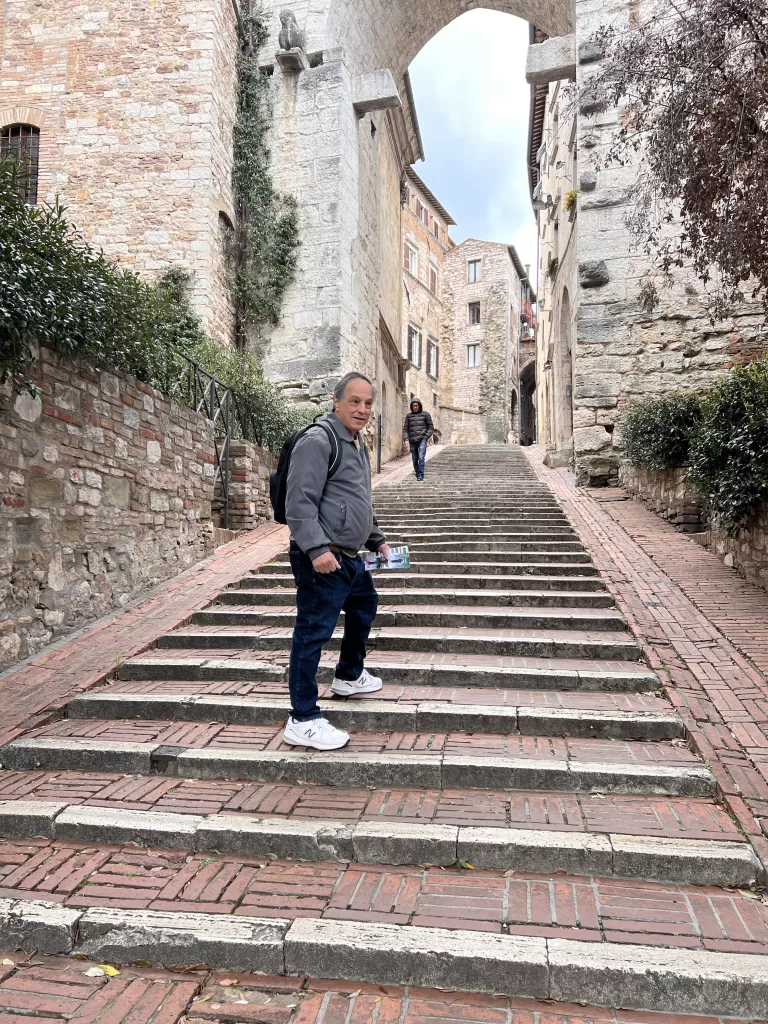
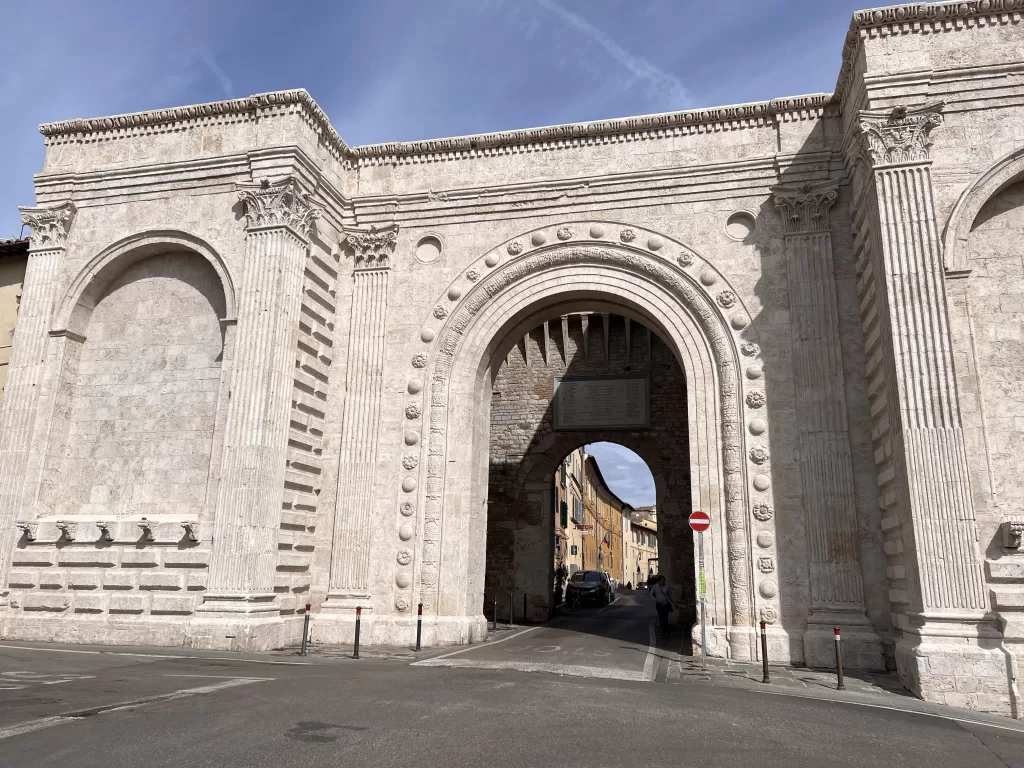
6. Walk along the aqueduct
One of the most fascinating walks in Perugia is along the old aqueduct. Perugia’s rapidly growing population in the late middle ages made expanding it’s water supply necessary. The town administrators decided only an aqueduct could solve the water problem. Thus a 4 km long aqueduct was started in 1254 and finished in 1280. Passing down mountainsides and across fields it transported fresh mountain water from nearby Monte Pacciano to the Fontana Maggiore in Piazza IV Novembre.
Unfortunately, nearly 600 years later, the aqueduct had to be closed down because of continuous problems with leaks and maintenance costs. (Meanwhile another aqueduct was built from Bagnara di Nocera to a tank in the nearby community of Monteripido.) The original aqueduct has since been converted to a wonderful walking path. As it wends its way through Perugia it passes ancient gateways and archways and interesting architecture. It thus provides another excellent place to stroll through historical Perugia.
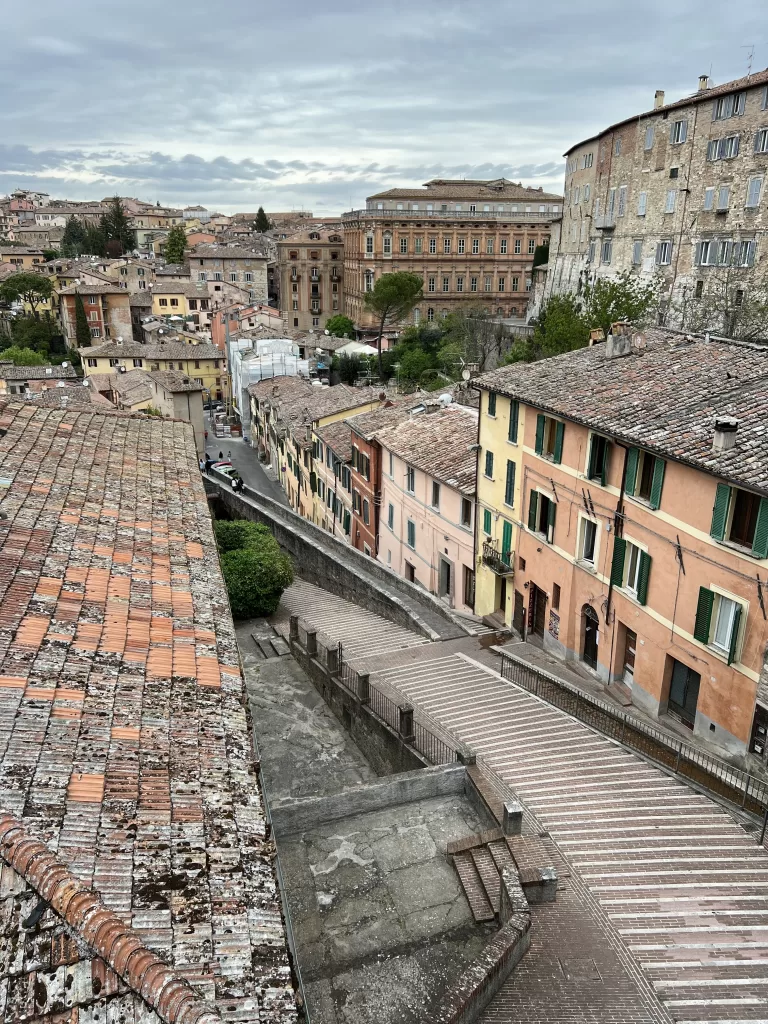
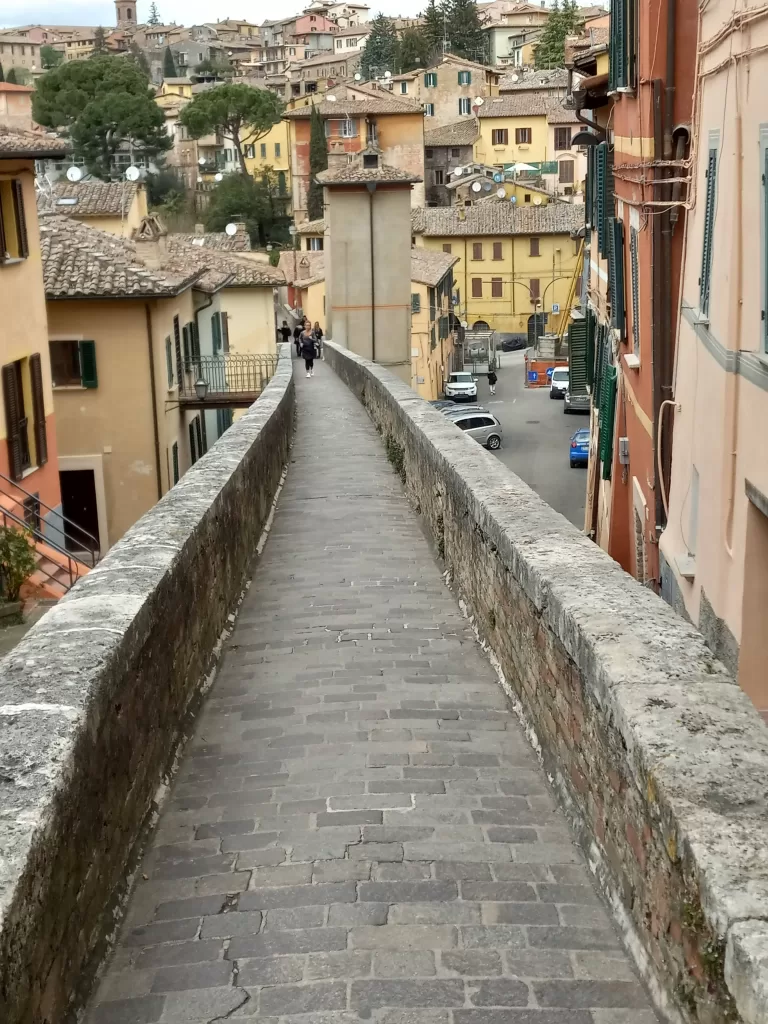
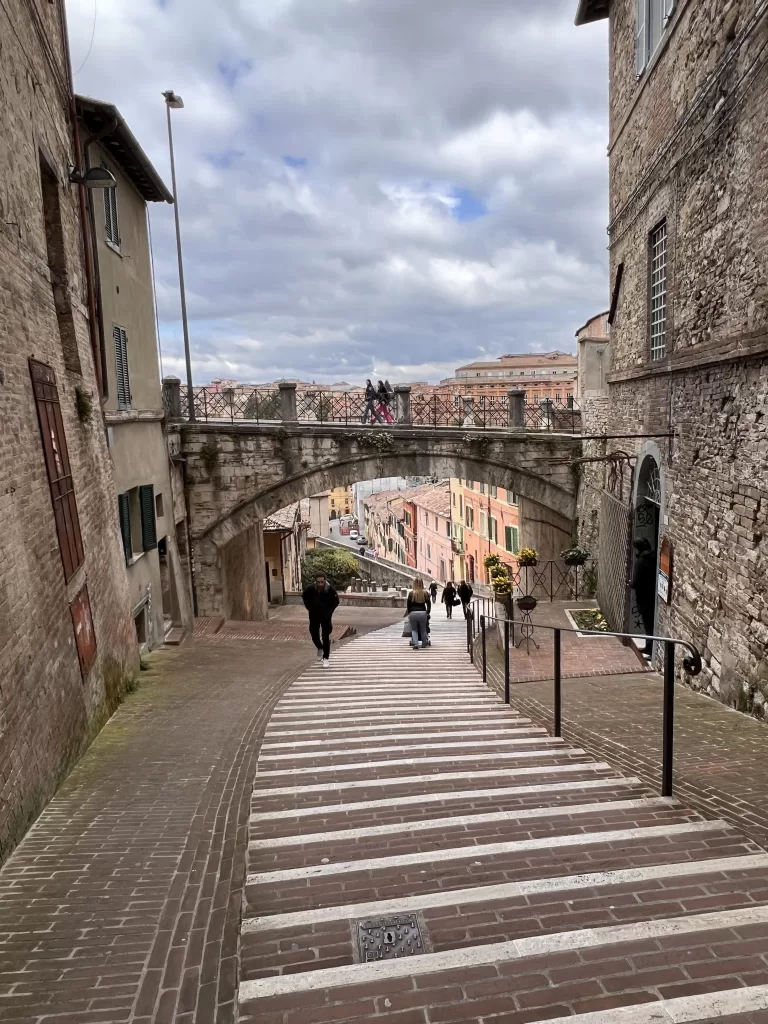
7. Visit the fresh food markets and antiques market
A major blunder in my opinion is avoiding the food markets in Italy. ITALY IS THE FOOD MARKETS! OK, OK, Italy is also so much more. But you get my point. Food in Italy is to be savored whether in a fine meal or in its fresh uncooked form.
If you are staying in the historic center of Perugia, the following are the main markets:
(NOTE: Be aware that the hours, dates, and locations seem to vary from time to time.)
- The outdoor farmers market is set up every Wednesday from 8:00 am to 2:00 pm in Piazza Matteotti.
- Fresh seafood, meats, and fruits and vegetables, are sold in an indoor market (Il Mercato Coperto) located behind a building with a huge tower at Piazza Matteotti 18A. To get to it, go through a little archway and continue to a terrace. Then enter the building on the left and proceed down the stairs to the lower floor. The hours are from 7:30 am – 8:00 pm Mondays through Saturdays.
- The antiques market is set up outside Rocca Paolina and in Piazza Italia on the last Saturday and Sunday of each month. The hours are from 8:00 am to 8:00 pm.
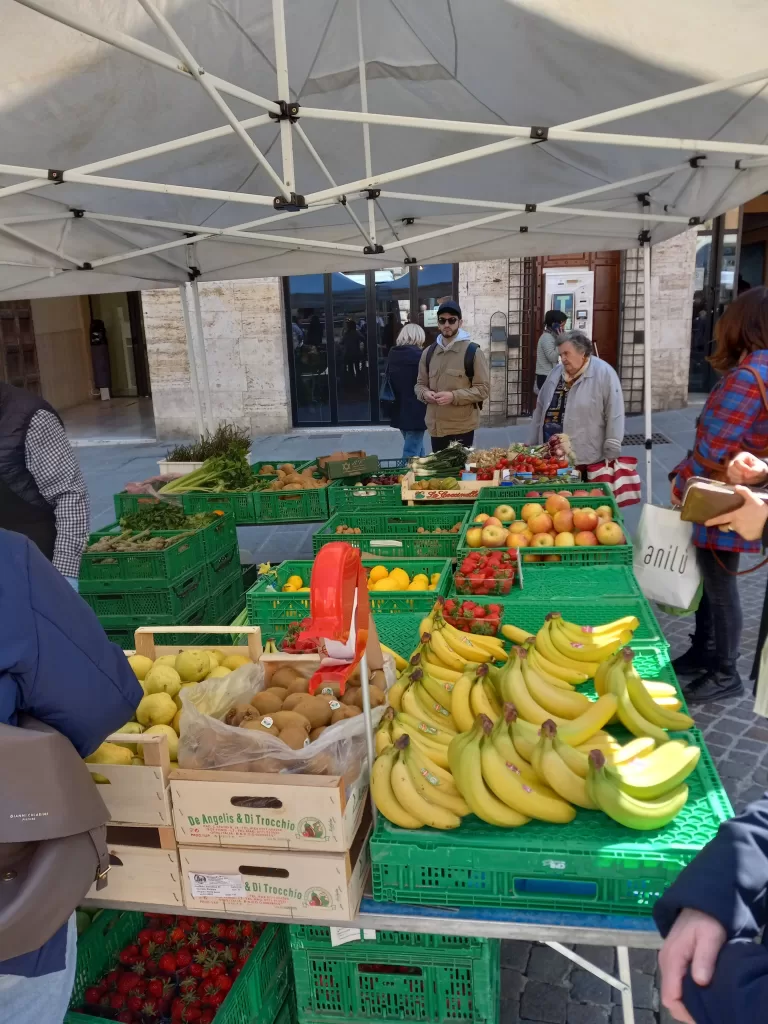
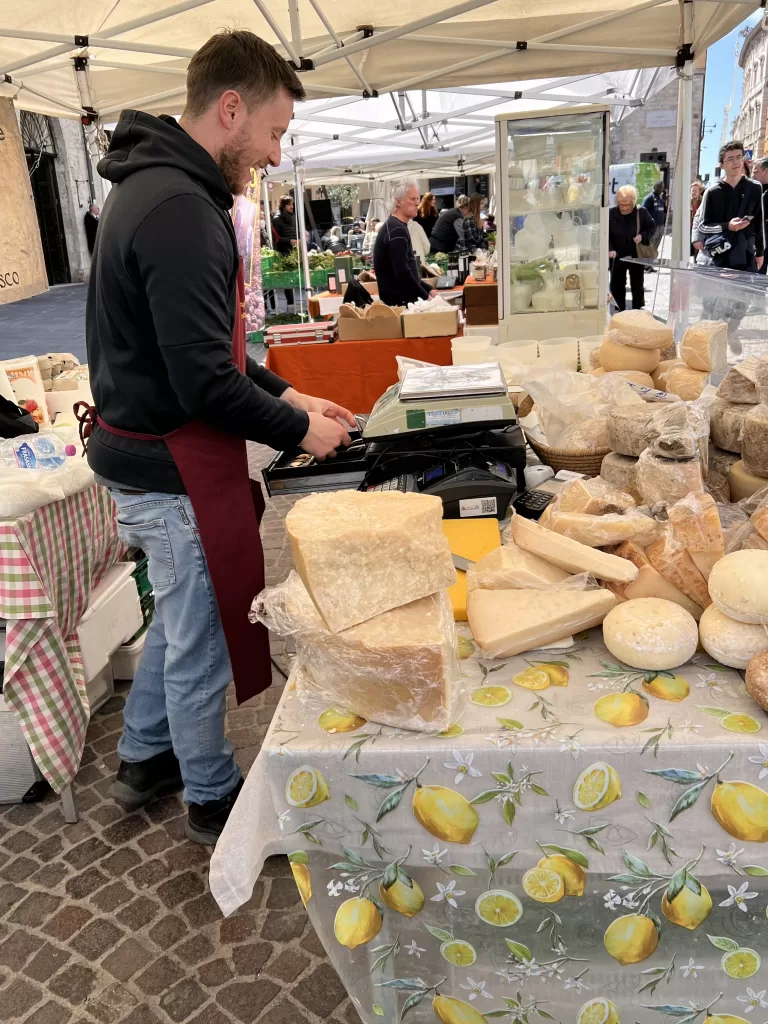
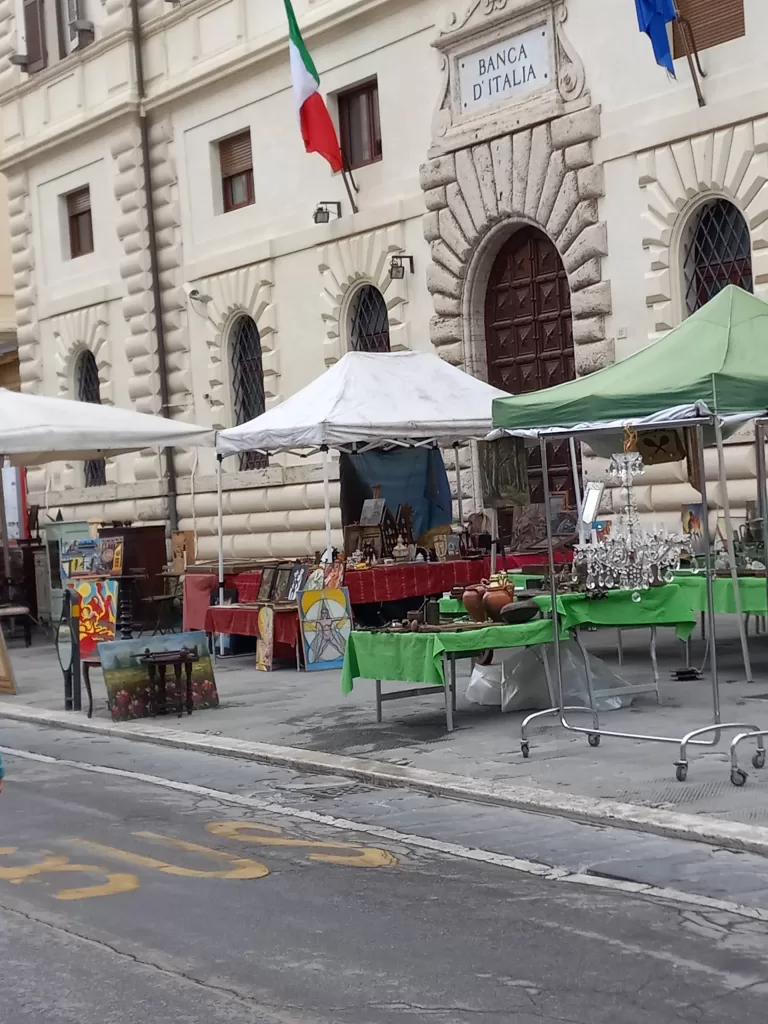
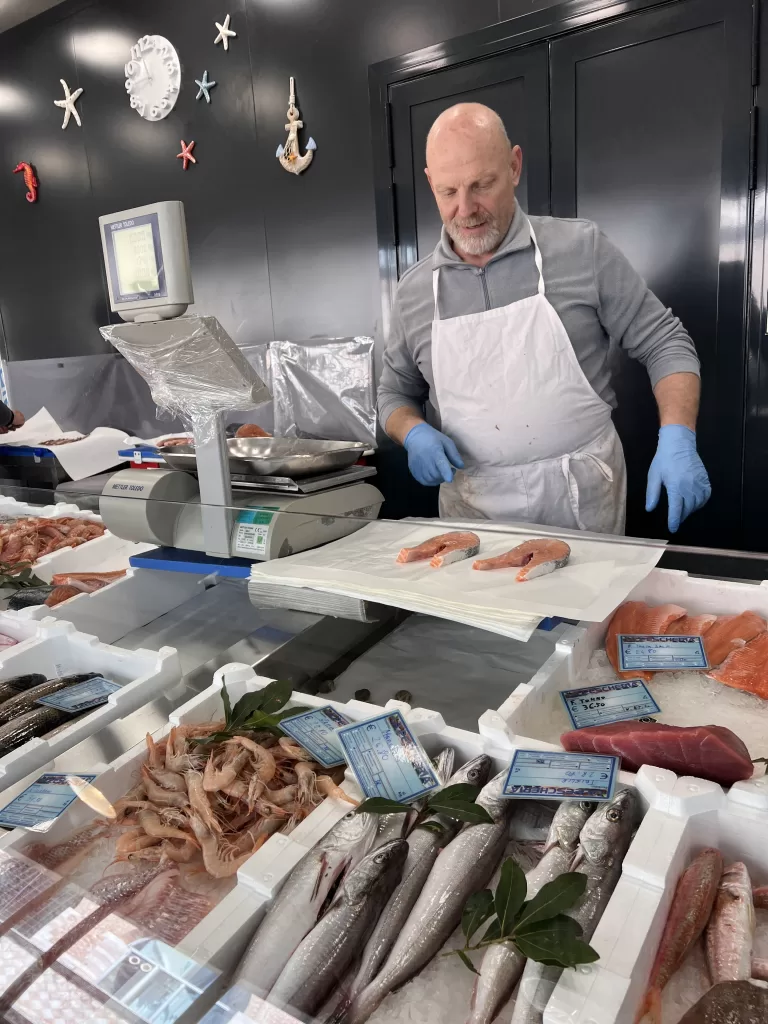
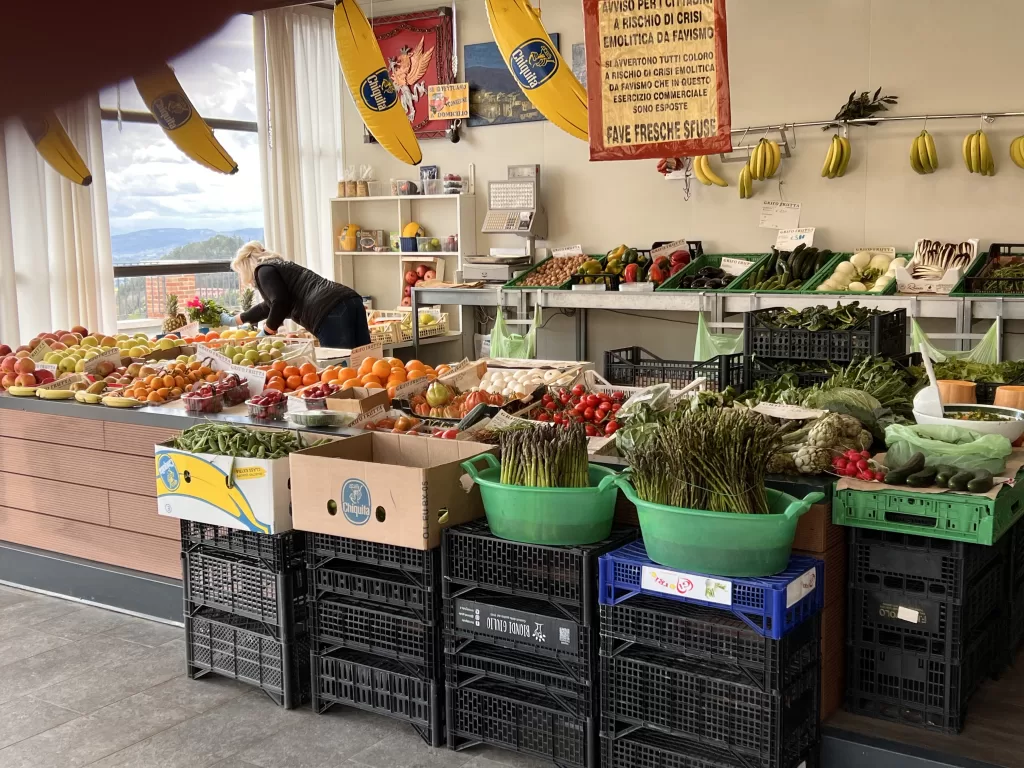
8. Views from Fortress of Porta Sole
From atop of the defensive walls of this old fortress (now in ruins) you will get splendid views of the countryside north of Perugia.
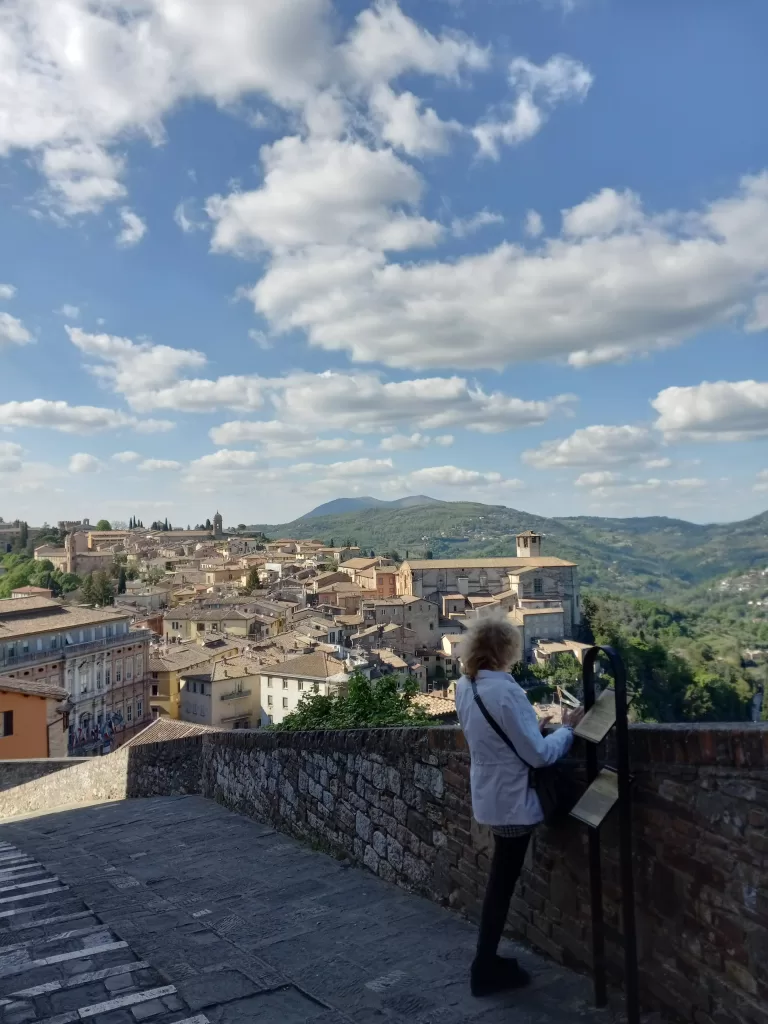
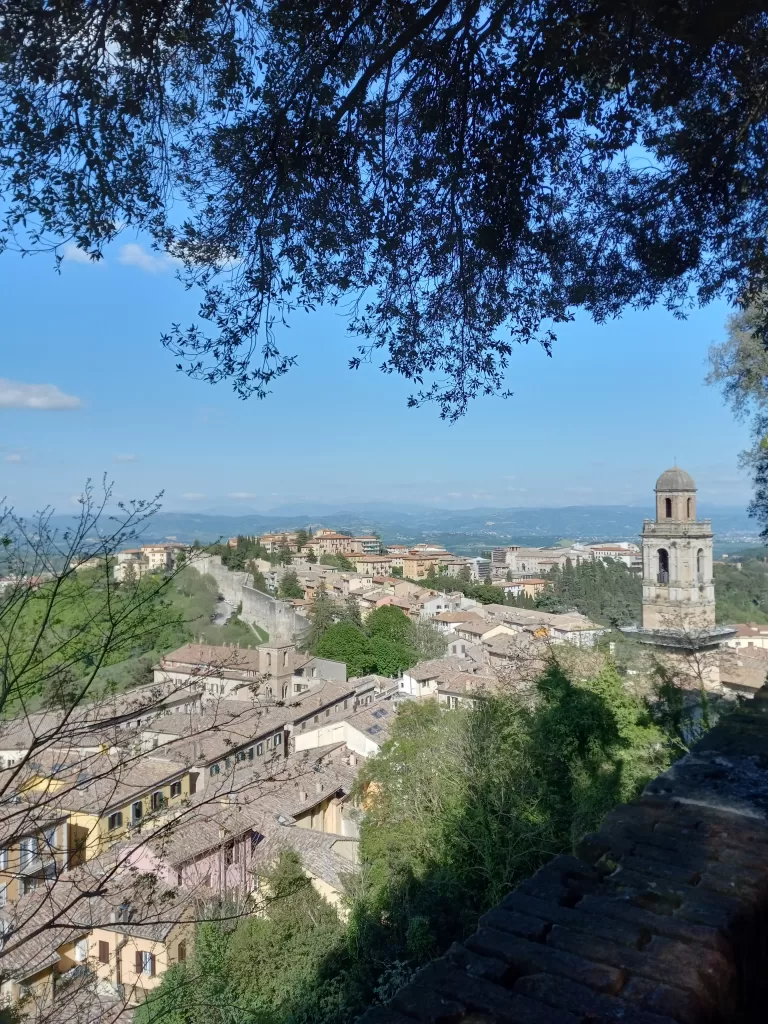
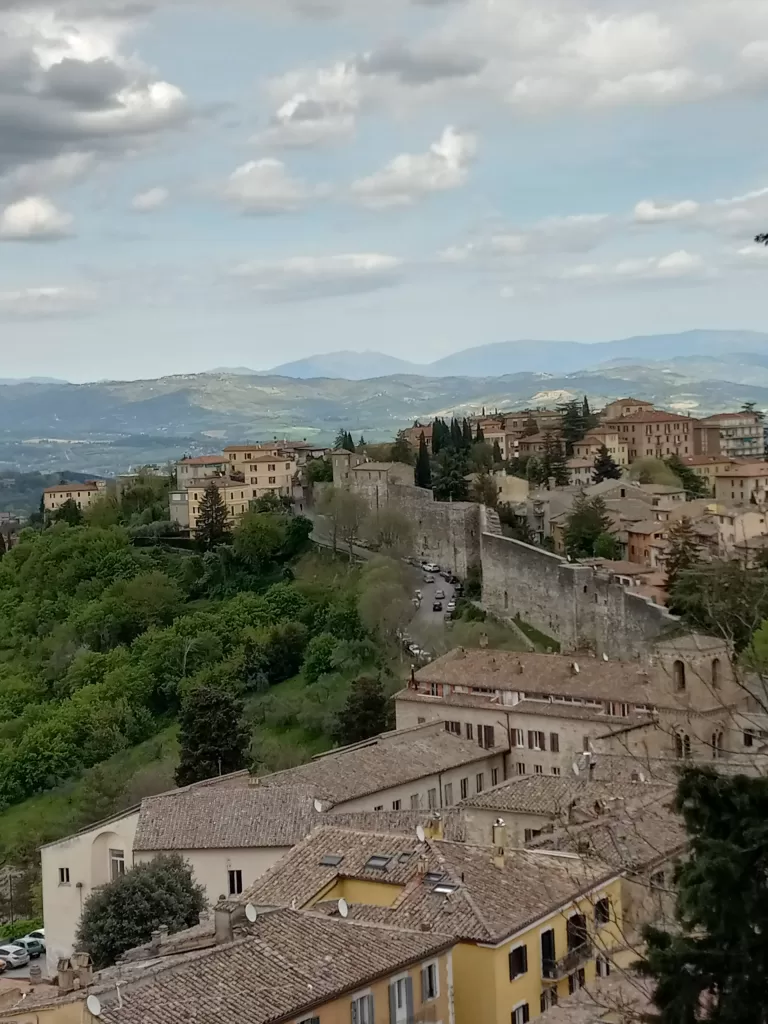
9. Giardini del Frontone
A nice walk to the pleasant park of Giardini del Frontone is definitely worth it. Relax in the tranquility of the greenery and open space, especially on a warm sunny day. Sit back on one of the benches and enjoy the silence and solitude of this pretty park.
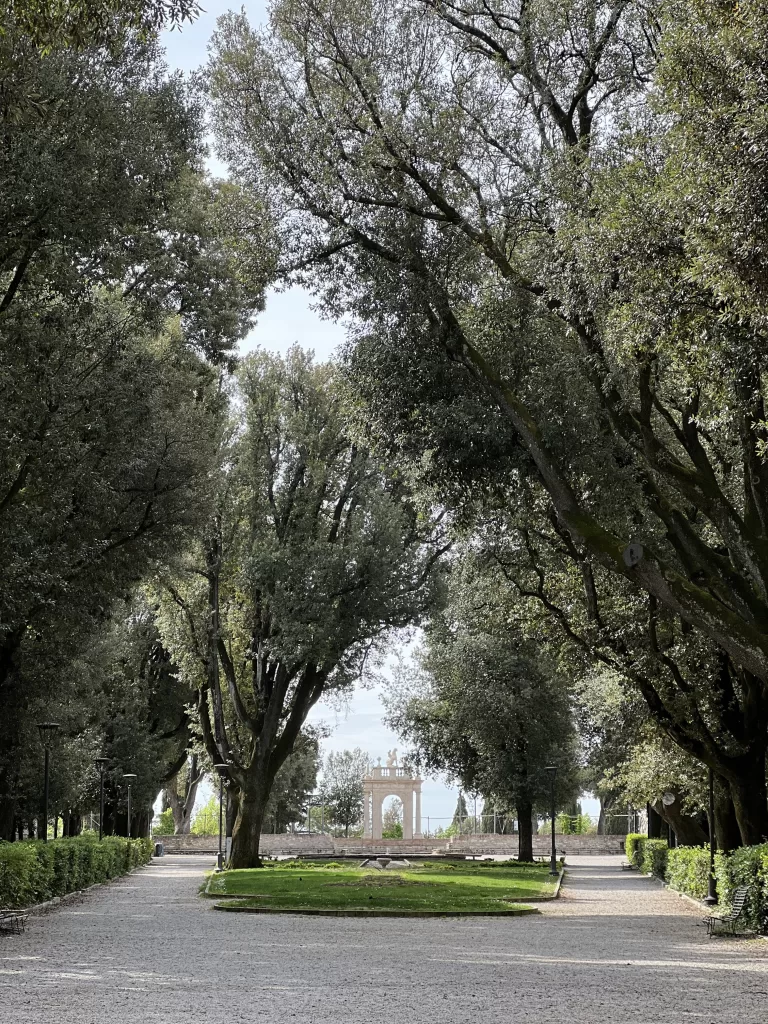
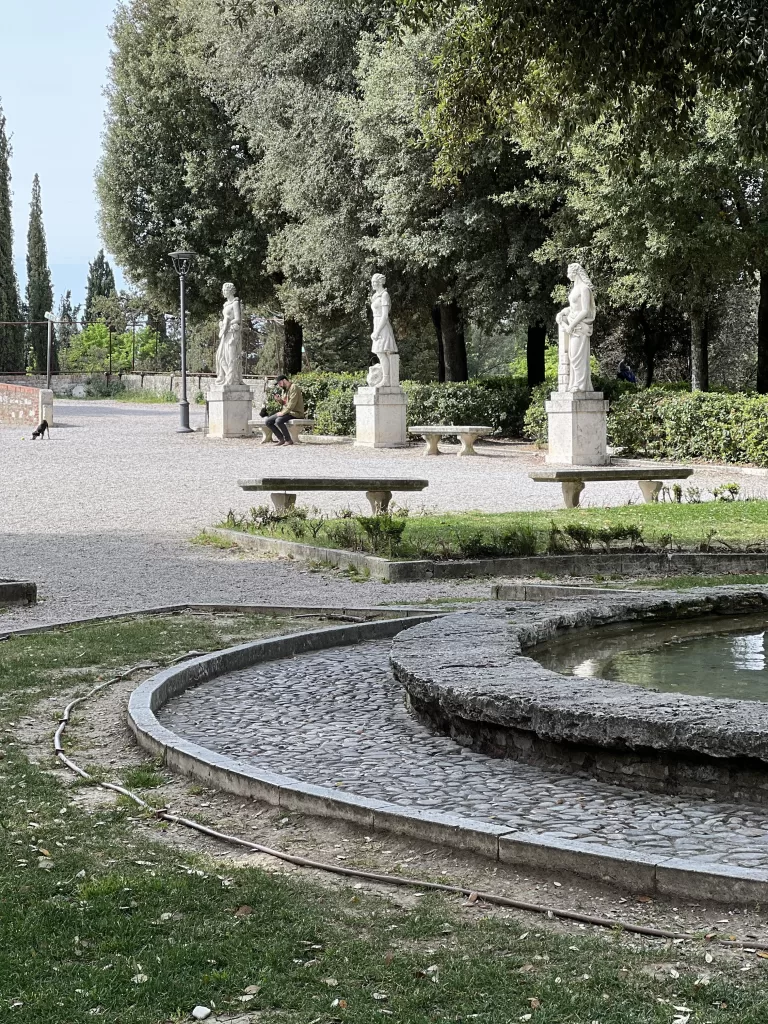
10. Museo di Accademia di Belle Arti
This incredible museum hosts approximately 600 plaster sculptures and several exquisite paintings. It was founded in 1573 by the artist Orazio Alfani and the architect Domenico Sozi. The museum was moved from its original location and now resides in the former convent of San Francesco al Prato. The building itself is home to Perugia’s School of Fine Arts.
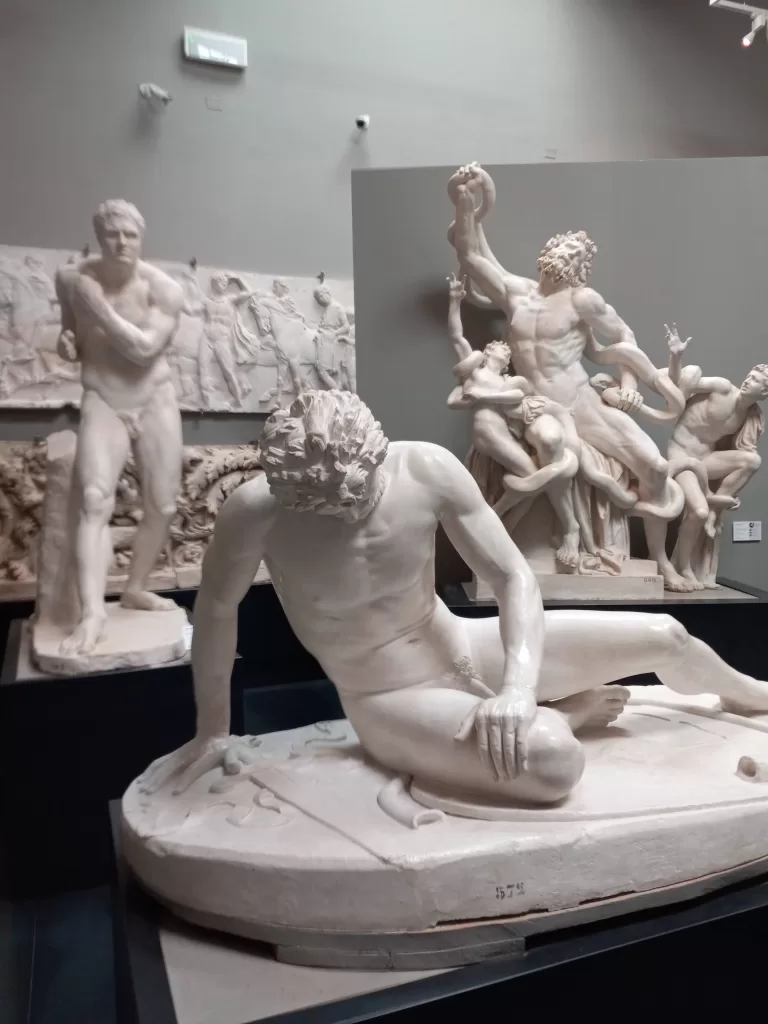
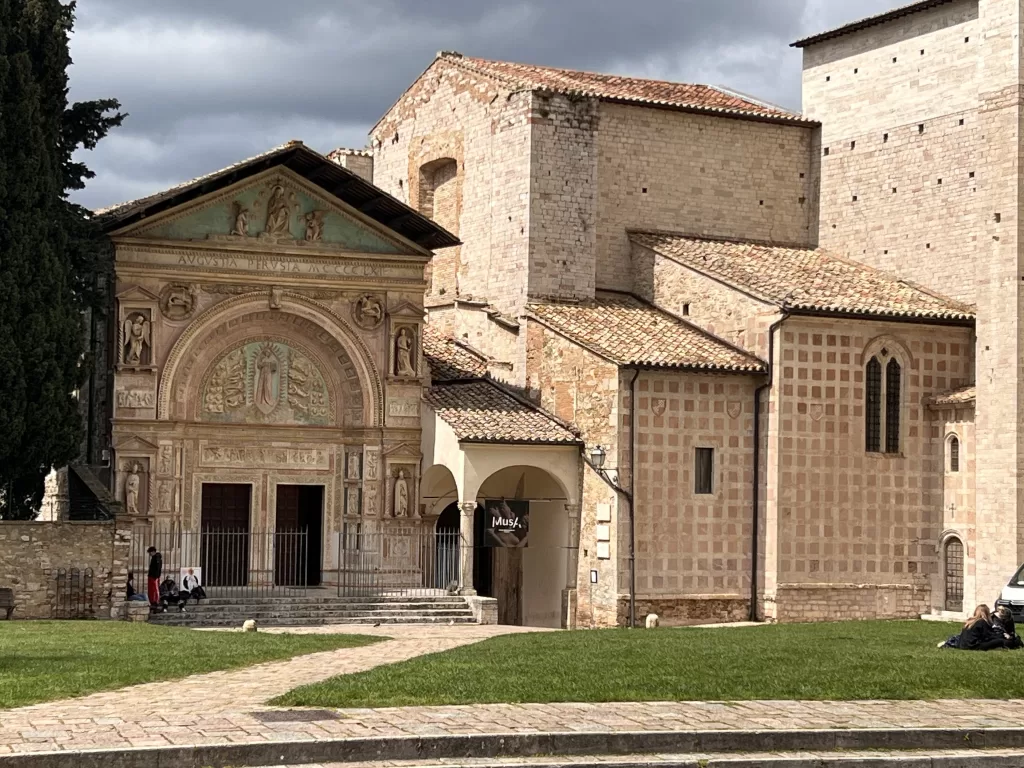
11. Rocca Paolina
The Roca Paolina was once a mighty fortress. It was built onto the 3rd century BC Etruscan wall and Porta Marzia. This 16th century fortress was mostly destroyed in 1848, then rebuilt, and then mostly destroyed again in 1860. All that remains now are the basements. Nevertheless, what an amazing place it is! It has a cavernous, “dungeons and dragons” look to it that is very impressive. Inside are a few shops selling jewelry, clothing, souvenirs, and crafts. But amazingly there is a series of underground escalators that move along tunnels down one of Perugia’s very long hills to within a few hundred feet of the bus station!
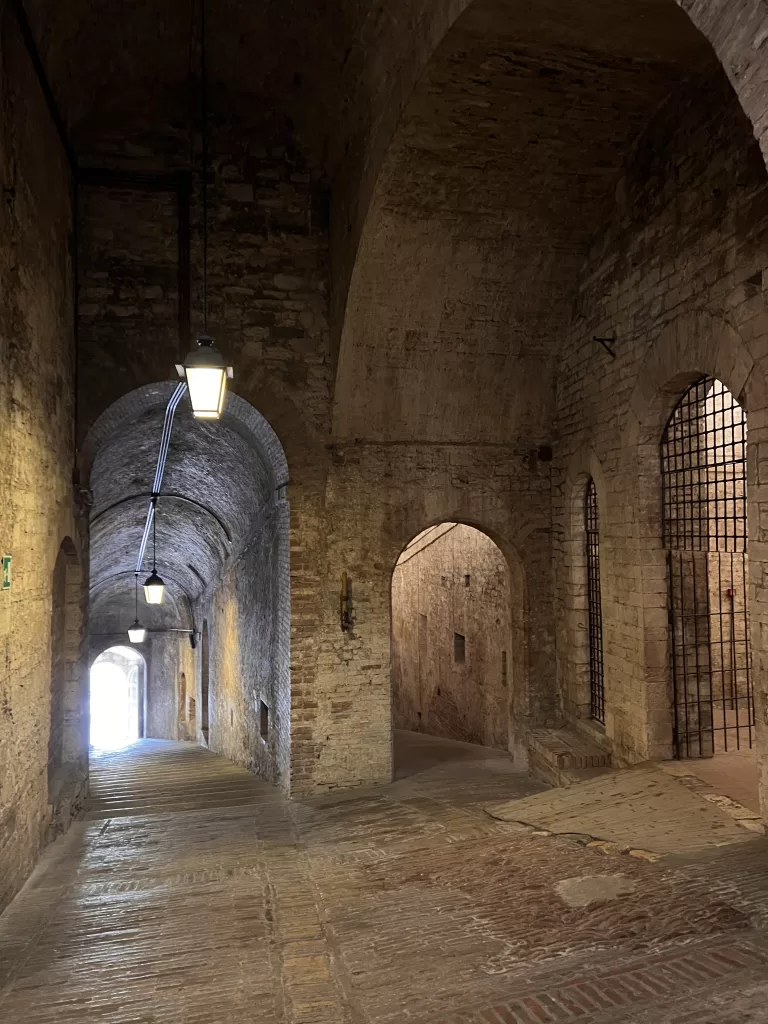
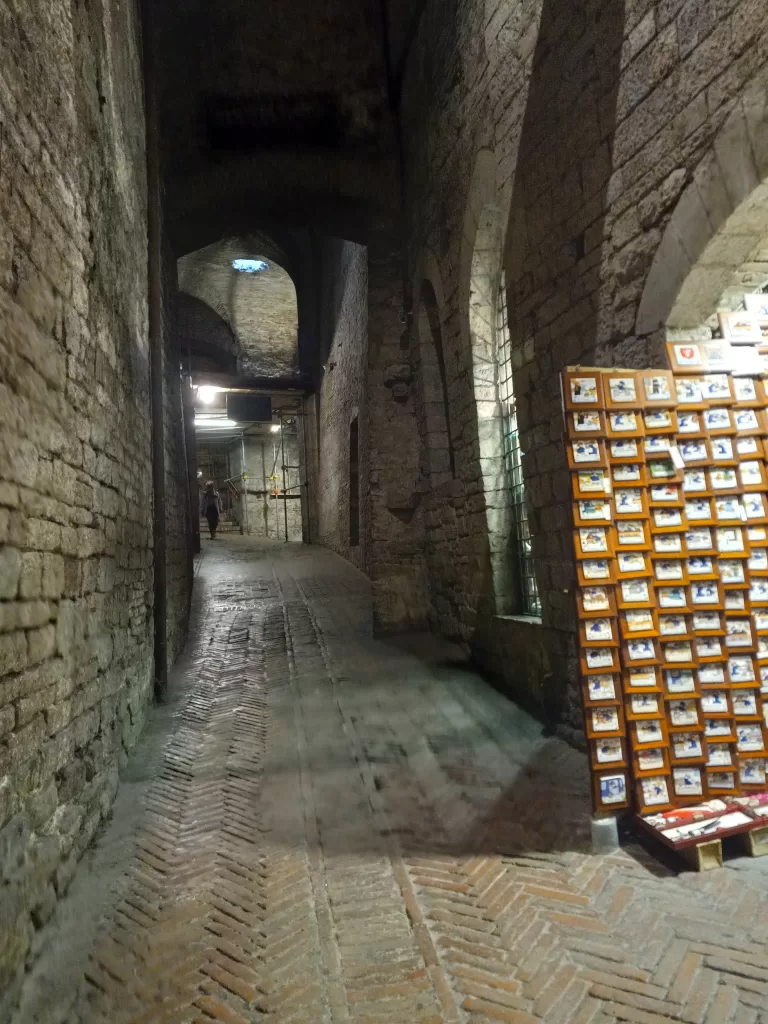
12. Take day trips from perugia
Perugia is an excellent central point from which to take day trips to interesting towns. The following places are definitely worth a visit:
Assisi (less than an hour each way by bus)
Cortona (less than an hour each way by train)
Gubbio (an hour each way by bus)
Orvieto (an hour and 45 minutes each way by train)
Todi (less than an hour each way by bus)
Tourist information office:
The tourist information office has moved to Via della Rupe. The directions are:
1. From Piazza Giacomo Matteotti, go down Via Guglielmo Oberdan.
2. Enter archway beneath sign for “Ristorante del Sole”.
3. Go down steps on your left.
4. The entrance is immediately on your left just before the Perugia Public library.
Restaurants:
A long time resident of Perugia once said to me “There is no such thing as a bad or mediocre restaurant in Perugia”. Based on restaurants I frequented on my month-long stay in Perugia, I have to agree. Some of my favorites are:
Ristorante Il Giurista (Via Bartolo 30)
Trattoria Borgo San Francesco (Via dei Priori 78)
Mediterranea (pizzeria) (Piazza Piccinino 11)
Locanda Del Bartoccio (Piazza Giacomo Matteotti 39)
Il Cantinone (Via Ritorta 6)
Train and Bus Information:
- The Perugia train station (Perugia Fontivegge) is located 4 miles southwest of the historic center. It can be reached by a tram whose entrance is just outside the tourist information office (see above). There are self-service ticket machines just outside the entrance.(Don’t go to the Sant’Anna train station which is located a few blocks northeast of the bus station. It serves a very limited regional train line.)
- The bus station is located in Piazza Partigiani, a few blocks south of Piazza Italia.
- You can see schedules and buy tickets at the bus or train stations or you can use one of the following apps or web sites:
(buses and trains) www.rome2rio.com or Rome2Rio app
(mostly trains but also some buses) www.trainline.com or trainline app

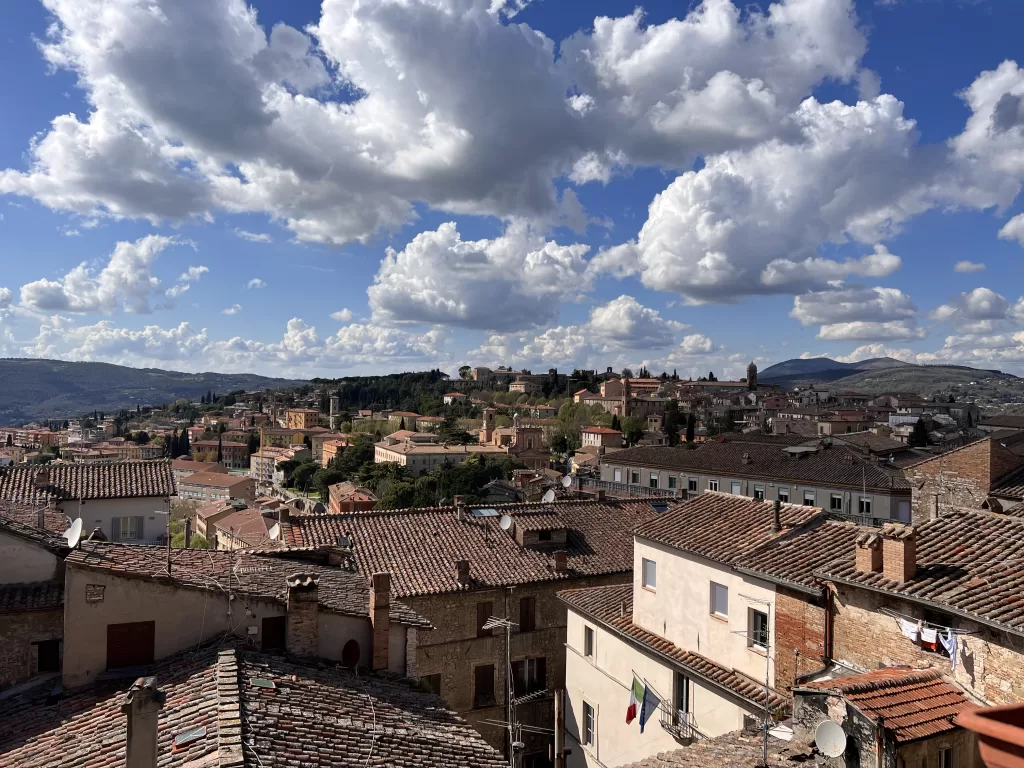
https://shorturl.fm/FYWUi
https://shorturl.fm/6PC3q
https://shorturl.fm/MJwBT
https://shorturl.fm/X4xhC
https://shorturl.fm/pBYvs
https://shorturl.fm/uoO1O